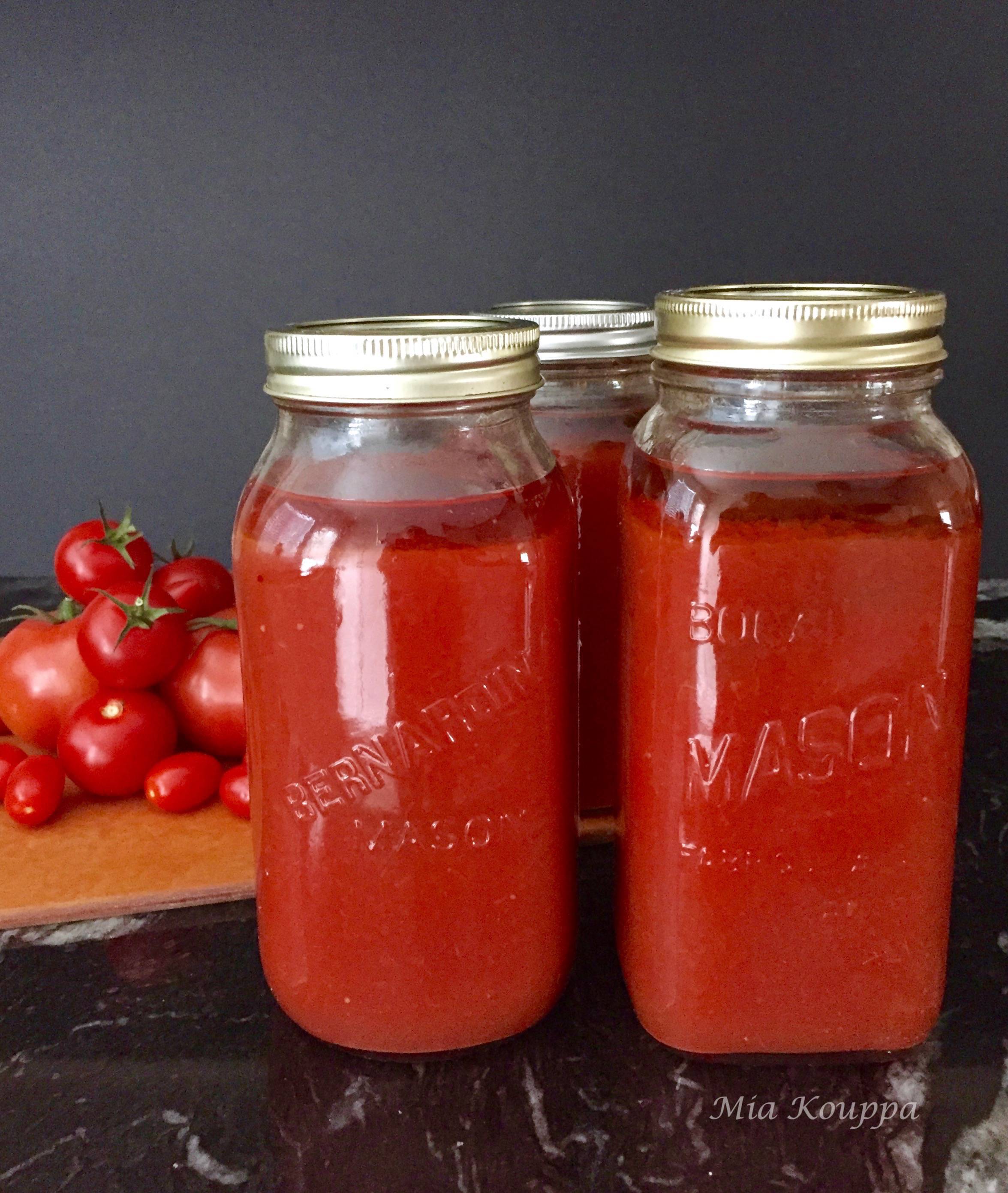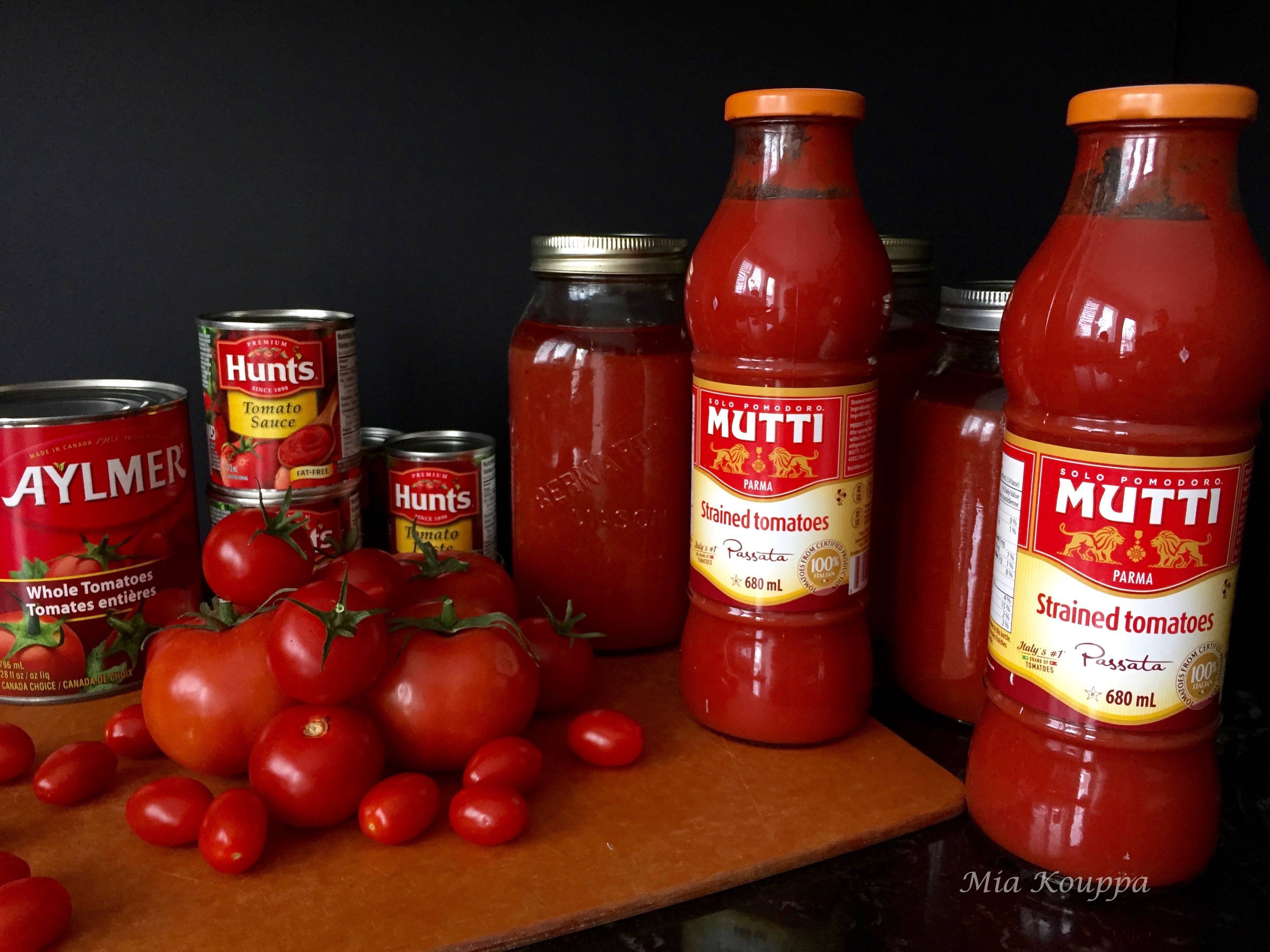Tomatoes

I say tomato, you say…yeah, but what kind of tomato? Greeks love tomatoes and we incorporate this fruit (yes, tomatoes are fruit) into several traditional recipes. When fresh tomatoes are called for, things are pretty straightforward; find the freshest, most delicious tomatoes and buy them. If you are lucky enough to have a garden, or even a small balcony that can accommodate a pot, plant some tomato seeds and enjoy freshly-picked, vine-ripened tomatoes for as long as the weather in your neck of the woods allows. Otherwise, try to find the ripest, sweetest smelling tomatoes at the grocery store and keep them on the counter until you are ready to use them. In our city, we are lucky to have a local company which grows beautiful vine-ripened tomatoes year round, in a rooftop greenhouse. Incredible! Maybe you have something similar where you live? Regardless of where you find your perfect tomatoes, do not place them in the refrigerator, particularly if you are planning to eat them uncooked. The cold temperature does bad things to tomatoes, damaging their inner membranes and giving them that nasty mealy texture that is very un-tomato like. Great tomatoes belong on the kitchen counter, showing off their bright red skins and fresh green stems.
When recipes call for something other than fresh tomatoes, things get tricky. There are so many options at the market, that it can be confusing to know what to choose. Is a tomato puree the same thing as a tomato sauce? What the heck is the difference between strained tomatoes and tomato juice? Why is tomato paste always found in such small little cans? Can I just buy whole canned tomatoes and dice them myself, instead of buying diced tomatoes? So many tomato questions!
We feel your pain, but we must admit, we personally have it pretty good. Every year our parents make their own tomato sauce and we reap the benefits. Next summer, we hope to share with you exactly how they prepare and preserve their sauce, but in the meanwhile, below we have a brief explanation of some alternatives.

Strained tomatoes / passata: The closest thing that we have found to our parents’ homemade tomato sauce is strained tomatoes, or passata. Typically found in glass jars, strained tomatoes are uncooked, crushed and then sieved. What results is a thick, rich sauce without peel or seeds. It is typically a little pricier than canned tomatoes and is generally made from high quality fruit. If you can find strained tomatoes, we recommend you try them.
Canned tomato varieties
Tomato paste (also called tomato puree in some parts of Europe): This is a thick, concentrated paste made by cooking tomatoes so that all of the liquid evaporates. Seeds and peel are then removed, and the tomatoes are usually cooked further. What results is a very concentrated tomato product. Tomato paste now comes in tubes, which is great because you simply use what you need and reserve the rest for another day. If, however, you have purchased your tomato paste in a can and have leftovers, freeze one tablespoon quantities in an ice cube tray and, once frozen, store the cubes in a freezer bag.
Whole canned tomatoes: Open up a can of whole tomatoes and you will find peeled whole tomatoes in a tomato juice. Because the tomatoes have only been peeled, they still contain their seeds and membranes. You can add these to a pot and roughly crush them up with the back of a wooden spoon, or even puree them in a blender to make a tomato puree.
Canned diced tomatoes: These are tomatoes which are diced into cubes and canned in a tomato juice. They are firm, and they remain firm even during the cooking process. Anytime you want to cook a meal in which you will end up with tomato pieces which have not disintegrated, this is the can you want.
Canned crushed tomatoes: Here you will find finely crushed tomatoes mixed with a little bit of tomato sauce. This is a great option when you want a rich tomato flavour, but want to start off with a product that tastes relatively fresh, because the tomatoes are usually not cooked.
Canned tomato sauce: This is pureed tomatoes which often have seasoning and herbs added. Canned tomato sauce is useful if you will be making a soup or a spaghetti sauce.
Other options:
In the summer, when tomatoes are at their peak, it is a good idea to freeze tomatoes to bring a bit of sunshine into a future, winter day. We freeze our tomatoes in two ways. The first method involves blending whole tomatoes (peel, seeds and all), and then pouring this puree into freezer bags. Then, when we want to make a tomato sauce, or add some fresh tomato flavour into a meal, we use one of these freezer bags. It is a good idea to label each bag with the amount of tomato sauce it contains (for example, 2 cups tomato).
Second, you can prepare whole tomatoes as if you were making yemista. Slice off the top of the tomato which has the stem end in order to make a lid, scoop out the insides, and then wrap the tomato shell and lid with plastic wrap and freeze. Then, when you want to make yemista using these tomatoes, remove them from the freezer, defrost, and stuff them with your filling.
Enjoy.
